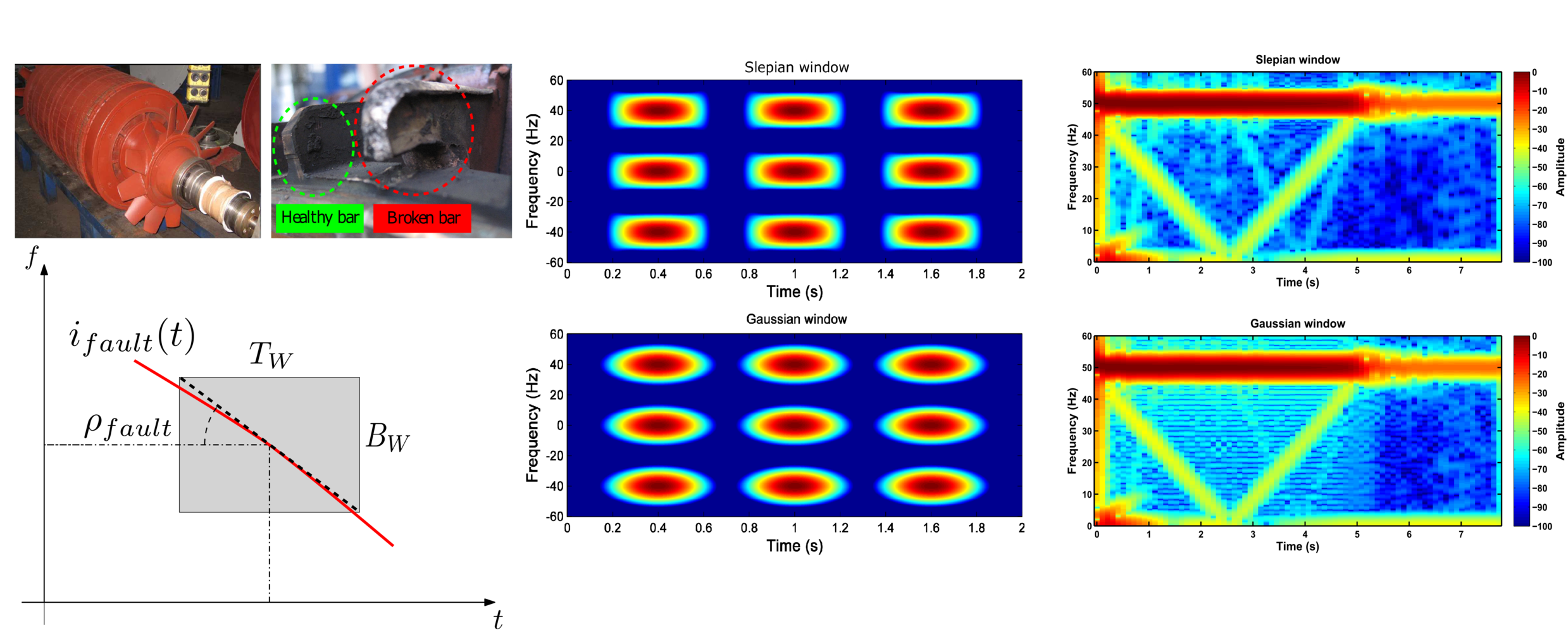Preprint
Article
Fault Diagnosis of Induction Machines in Transient Regime Using Current Sensors with an Optimized Slepian Window
Altmetrics
Downloads
965
Views
741
Comments
0
A peer-reviewed article of this preprint also exists.
Submitted:
05 December 2017
Posted:
06 December 2017
You are already at the latest version
Alerts
Abstract
The aim of this paper is to introduce a new methodology for the fault diagnosis of induction machines working in transient regime, when time-frequency analysis tools are used. The proposed method relies on the use of the optimized Slepian window for performing the short time Fourier transform (STFT) of the stator current signal. It is shown that for a given sequence length of finite duration the Slepian window has the maximum concentration of energy, greater than can be reached with a gated Gaussian window, which is usually used as analysis window. In this paper the use and optimization of the Slepian window for fault diagnosis of induction machines is theoretically introduced and experimentally validated through the test of a 3.15 MW induction motor with broken bars during the start-up transient. The theoretical analysis and the experimental results show that the use of the Slepian window can highlight the fault components in the current's spectrogram with a significant reduction of the required computational resources.

Keywords:
Subject: Engineering - Electrical and Electronic Engineering
Copyright: This open access article is published under a Creative Commons CC BY 4.0 license, which permit the free download, distribution, and reuse, provided that the author and preprint are cited in any reuse.
MDPI Initiatives
Important Links
© 2024 MDPI (Basel, Switzerland) unless otherwise stated







